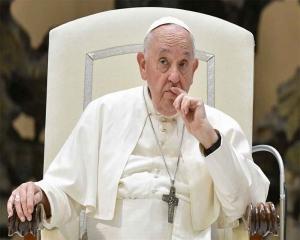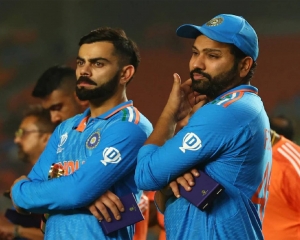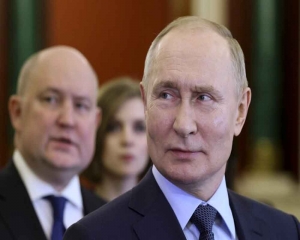In recent years, the Israeli-Palestinian conflict has been marked by a complex interplay between state and non-state actors, notably employing the Political Contest Model developed by Gadi Wolfsfeld. This model illustrates the asymmetry in power and resources between state and non-state entities, exemplified by Israel’s actions in West Bank, Gaza Strip, and Jewish settlements.
The quintessential Political Contest Model, as advanced by Israeli scholar Gadi Wolfsfeld, posits the narrative that during a conflict, the state actor is pitted against a non-state actor, in tandem with the germination and sustenance of a spectacular effect. The state actor is steadily accoutered with the characteristics of power and resources, such as the military prowess of the high-riding establishment and the economic premise of the regime of the day. On the other hand, the non-state actor is hard-pressed for resources and thus consequently relies upon a spectacular impact, such as that of an insurgent action, which inflicts damage to the state’s habiliments and its symbols of state power. This is the Simulacra effect of the non-state actor. The same model has been utilised by the state of Israel to rationalise its actions in the West Bank and the Gaza Strip, as well as the related Jewish settlements in the contested terrain.
The Israel-Palestine conflict is often scrutinised in an inquisitive quest to identify the culpable agent, leading to collateral damage and the mass destruction of human lives and the remnants of human civilisation. The prologue of “O Jerusalem” sets the stage in Israel, stating, “They knew the sound. For months before this afternoon in May 1948, the forlorn wail had symbolised the frontiers of their existence. It was the skirl of the British bagpipes, and now its call reverberated for the last time down these ancient stone passages, piping away the few British soldiers left inside the old walled city of Jerusalem. They marched in columns, silent and unsmiling, the rhythmic tramp of their boots blending with the dying notes of the bagpipes. At the head and the rear of each column, one soldier, a sten gun crooked in his elbow, broke the pattern of their unwavering stares, his restless eyes scanning the hostile stone facades around them.”
The Balfour Declaration, penned by Arthur James Balfour, contained ambiguities that required interpreters and solution providers to attempt filling the gaps. Released in 1917, the declaration declared British support for the establishment of a national home for dispersed Jews in Palestine. It took the form of a letter from Arthur James Balfour, the British Foreign Secretary, to Lionel Rothschild, a leader of the Anglo-Jewish community. Despite this, there was a struggle to balance the two communities in Palestine. It was asserted that neither party should do anything to diminish the civil and religious rights of the non-Jewish communities in the land of Palestine. Thus, one can trace back to history to advance the argument that the seeds of conflict resolution were embedded in the two-nation theory, a concept that still perplexes present-day interlocutors.
There is no doubt that Hamas is considered a terrorist organisation of the non-state genre. The incident on October 7, where they caused mayhem and kidnapped Jews in south Israel, is cited by Benjamin Netanyahu as a justification for the IDF’s aggressive actions and relentless attacks on northern Gaza in the early stages of the conflict. Prime Minister Netanyahu contends, “This is a fight till the finish, and the war will be carried on until the whole of the Hamas establishment is annihilated in Gaza Strip.”
The UNSC has reprimanded Tel Aviv, emphasising the need for a humanitarian corridor to be provided to international aid agencies. Ceasefires, negotiated by neighbouring state actors like Egypt, have been proposed to facilitate this. Describing Israel’s involvement as a ceaseless Armageddon would not be an overstatement, according to Prime Minister Benjamin Netanyahu. Israel aims to destroy both Hamas’ military and governing capabilities. Initially designated as a recalcitrant non-state actor due to its actions on October 7, 2023, Hamas has faced international criticism for the reported massive collateral damage in Gaza. While President Joe Biden expresses unwavering support for Tel Aviv, he urges less intrusive actions, emphasising the prevention of incidents like the destruction of Shifa Hospital. Similar to the Ukraine-Russia conflict, the issue of collateral damage poses a challenge for the IDF, which contends that civilian facilities, including hospitals, serve as shelters for Hamas terrorists and concealment of their strength through tunnels.
The world awaits with bated breath to see how the global ecosystem will navigate the twin conflicts in Ukraine and Israel, especially with the pervasive threat of the pandemic looming. The credibility of international institutions such as the United Nations and the ambiguous stance of superpowers like the United States have come under scrutiny, notably with the aggressive actions of Houthi rebels in Yemen and the involvement of Iranian agents, which further escalates the conflict. The promotion of peace and stability must be orchestrated by the interlocutors in West Asia and the great powers collectively.
The United States of America has made it clear that it will stand by Israel regardless of the circumstances, and two warship groups have been stationed in the near vicinity. President Biden has unequivocally expressed this intent to the international community, both at the UNSC and beyond. Collateral damage is strongly condemned by the Americans, as indicated by Biden’s statement regarding the tragic news related to Gad Haggai. The United States has traditionally been a staunch ally of Tel Aviv, and the Jewish lobby, despite facing dehumanisation globally, has a significant influence in the political, social, and economic life of America.
A relevant and timely White House release succinctly asserts, “Today, the world faces an inflection point, where the choices we make, including in the crises in Europe and West Asia, will determine the direction of our future for generations to come. What will our world look like on the other side of these conflicts? Will we deny Hamas the ability to carry out pure, unadulterated evil? Will Israelis and Palestinians one day live side by side in peace, with two states for two peoples?” IR theorist John Mearsheimer staunchly contends that the key pillar of US policy has been the nation-state of Israel, which, according to him, is an undeniable fact. Additional strategic imperatives and a higher moral perch have been incorporated into the US-Israel narrative, and this is prominently reflected in the contemporary crisis.
(The writer teaches at International Relations and International Organisations, Indian Institute of Public Administration, New Delhi)



















